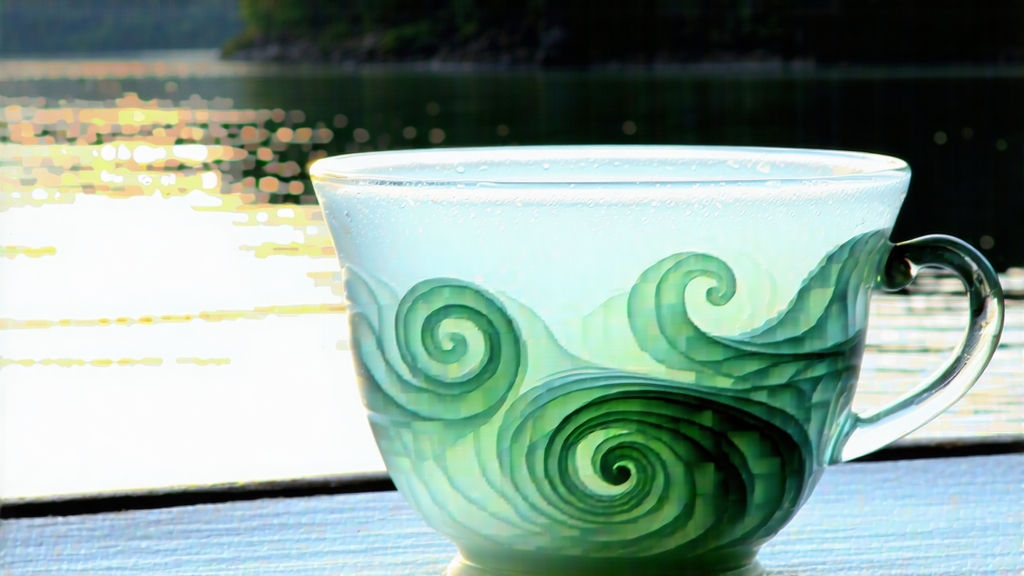
Biluochun, whose name translates literally to “Green Snail Spring,” is one of China’s ten most celebrated teas, yet it remains a quiet mystery outside the circles of serious tea lovers. Grown on the mist-laden hills that cradle Taihu Lake in Jiangsu Province, this emerald-green, downy tea has been seducing poets, emperors and farmers alike since the late Tang dynasty. Its tiny, spiral-shaped leaves look like miniature snail shells, hence the poetic name bestowed by the Kangxi Emperor in the seventeenth century when he found the original name “Xia Sha Ren Xiang” (“Scary Fragrance”) too indelicate for an imperial palate.
History and Legend
Local lore claims that a tea-picking girl once tucked a handful of fresh buds into her bosom on an early spring morning. The warmth of her body released an intoxicating perfume that startled passing monks, who asked what “scary fragrance” she carried. The name stuck until Kangxi’s visit, when the emperor, enchanted by both the aroma and the leaf’s curled shape, rechristened it Biluochun. Commerce soon followed connoisseurship: by the Qing dynasty the tea was shipped northward along the Grand Canal to Beijing, tucked into padded bamboo crates lined with pomelo peel to preserve its delicate aromatics.
Micro-terroir
The Dongting Mountains—actually two islands, Dongshan and Xishan—rise out of Taihu’s vast, shallow waters, creating a natural fog machine. Warm lake air meets cool hill breezes, blanketing tea gardens in cloud cover that filters sunlight and slows photosynthesis. The result is an unusually high concentration of amino acids, especially L-theanine, which gives Biluochun its signature umami sweetness. Soils are acidic, a mix of granite detritus and lake sediment rich in iron and zinc. Farmers plant the bushes among fruit trees—peach, plum, loquat—so the tea absorbs floral notes from neighboring blossoms, a Chinese agricultural technique called “intercropping aromatics.”
Cultivars
The original landrace is the Dongting群体种 (qunti zhong), a seed-propagated shrub with small, narrow leaves and extreme cold tolerance. In the 1980s researchers released clonal varieties such as Zaochun (Early Spring) and Wannong 7, which flush ten days earlier and yield higher, but purists insist the old strain delivers deeper complexity. High-elevation gardens above 200 m also harbor micro-cultivars nicknamed “wild fruit fragrance,” identifiable only by local farmers who still graft cuttings onto rootstock the way vintners once did in Bordeaux.
Plucking Standards
Authentic Biluochun is made solely from one bud plus an unfolding leaf, picked when the bud is 1.5–2 cm long and still downy. Experienced pickers finish before 9 a.m. while dew persists; the moisture acts as a natural protective film against bruising. A top-grade kilo requires roughly 70,000 plucks, the handiwork of five workers over a single dawn.
Crafting the Spiral
Withering is skipped; the goal is to lock in greenness. Instead, the leaves undergo “shaqing” (kill-green) within four hours of harvest in woks heated to 180 °C. The master’s bare hand flips the leaves against the scorching metal for exactly 3–4 minutes, relying on touch to judge when the cell walls rupture and grassy volatiles vanish. Immediately the temperature is lowered to 70 °C and the “cuo tuan” (rub-spiral) phase begins: palms press the leaves in concentric circles, coaxing them into tight spirals while moisture drops from 72 % to 30 %. A final low-heat “ti hao” (raise the down) stage coaxes the silvery pekoe to the surface, giving the finished tea its velvety sheen. Total firing time: 40 minutes, all by hand, all in one continuous motion that looks like tai chi performed over fire.
Grading Spectrum
Industry jargon divides Biluochun into seven grades, but exporters simplify to Special Grade, Grade 1 and Grade 2. Special Grade comprises only pre-Qingming buds (picked before 5 April), each curl no larger than a ladybug, yielding a pale jade liquor with notes of sweet pea, white peach and a hint of marine minerality. Grade 1 allows post-Qingming plucks and slightly larger leaf